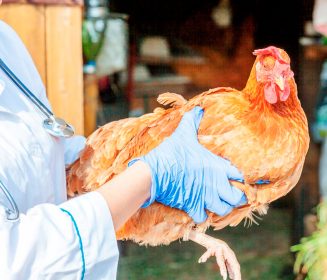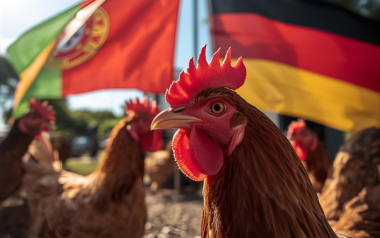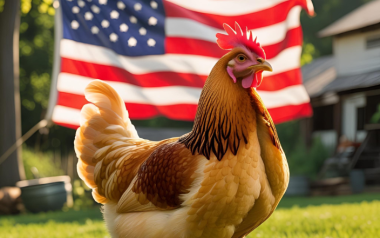Sources: Available upon request
02 Aug 2024
Bluebottle flies identified as carriers of Avian Influenza virus
Avian influenza, commonly known as bird flu, has been a persistent global health concern. While the primary mode of transmission is through direct contact between birds, a recent study conducted by researchers at Kyushu University has revealed an unexpected vector: bluebottle flies (Calliphora nigribarbis).
Avian influenza, commonly known as bird flu, has been a persistent global health concern. While the primary mode of transmission is through direct contact between birds, a recent study conducted by researchers at Kyushu University has revealed an unexpected vector: bluebottle flies (Calliphora nigribarbis). These flies, typically associated with decaying flesh and feces, have been found to carry the avian influenza virus in southern Japan.
The avian influenza crisis
Since 2020, avian influenza outbreaks have wreaked havoc on bird populations worldwide. Millions of wild birds have succumbed to the disease, and over 500 million farm birds have been culled. Japan, where even a single infection case on a poultry farm triggers the culling of all livestock, faced a staggering 326 outbreaks during the 2022-2023 winter season. This led to the sacrifice of 17.7 million birds. Additionally, some avian influenza strains have crossed over to mammals, including cows, goats, dogs, cats, and, more recently, poultry and dairy workers. The latter cases have been associated with alarmingly high mortality rates.
Investigating bluebottle flies
Professor Ryosuke Fujita and his team focused their research on a population of wild cranes in Izumi City, Kagoshima Prefecture, southern Japan. During the winter, thousands of cranes migrate to this area, making them susceptible to infection. In the winter of 2022-2023, 1,600 cranes from a colony of 10,000 died due to avian influenza.
The researchers set traps across Izumi City to capture bluebottle flies, particularly Calliphora nigribarbis. Unlike other fly species, these flies remain active during winter, coinciding with the peak avian influenza season. Their attraction to animal flesh and feces made them prime suspects for virus transmission.
The researchers collected 648 bluebottles and found that 14 of them carried the avian influenza virus. Most of the bluebottles that tested positive for the virus were collected at the sampling site closest to the crane colony.
Unexpected vectors
The team’s findings, published in Scientific Reports, highlight a potential new avenue for avian influenza spread. Bluebottle flies, drawn to carrion and waste, play an unexpected role in transmitting the virus. Understanding these vectors is crucial for safeguarding both wildlife and humans working closely with livestock. As we continue to combat avian influenza, researchers will explore additional pathways to prevent further outbreaks and protect global poultry populations.
In conclusion, bluebottle flies, drawn to carrion and waste, play an unexpected role in avian influenza transmission. Understanding these vectors is crucial for safeguarding both wildlife and humans working closely with livestock. As we continue to combat avian influenza, researchers will explore additional pathways to prevent further outbreaks and protect global poultry populations.







































